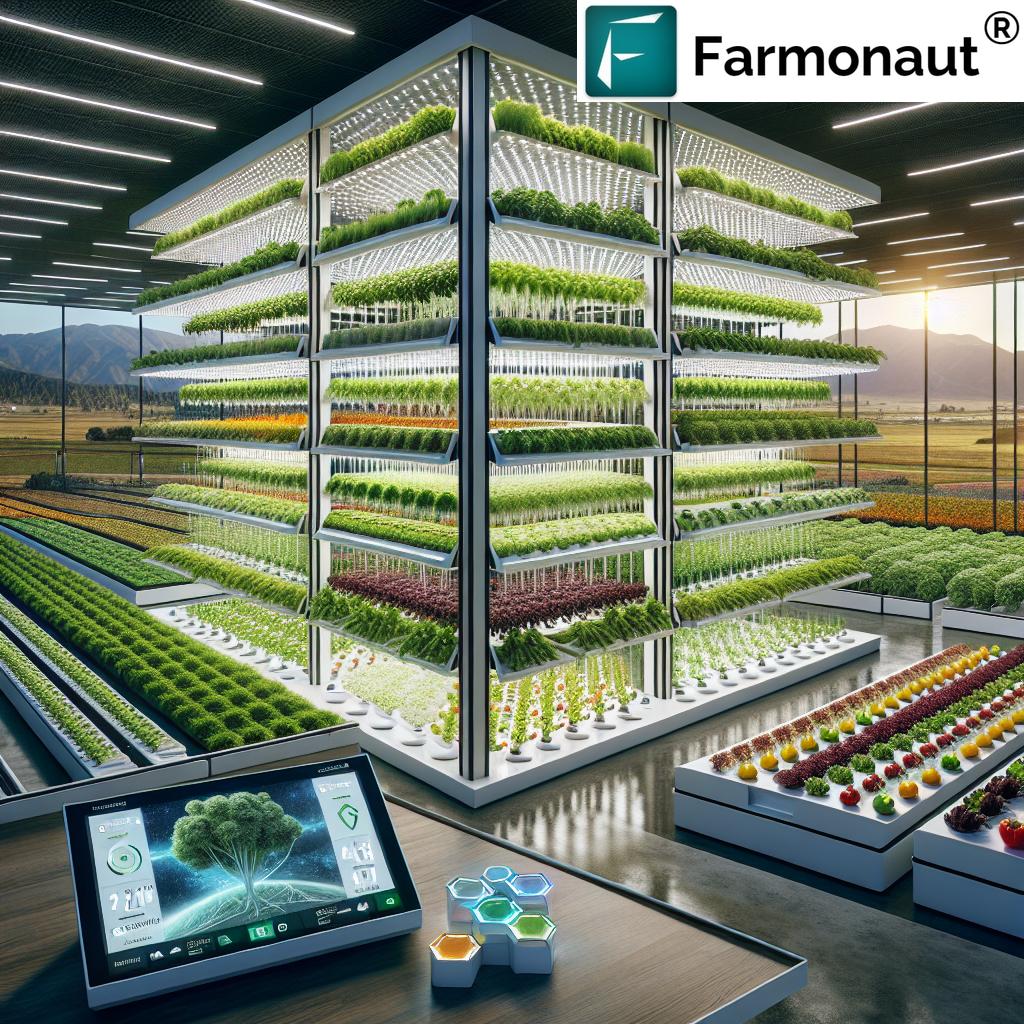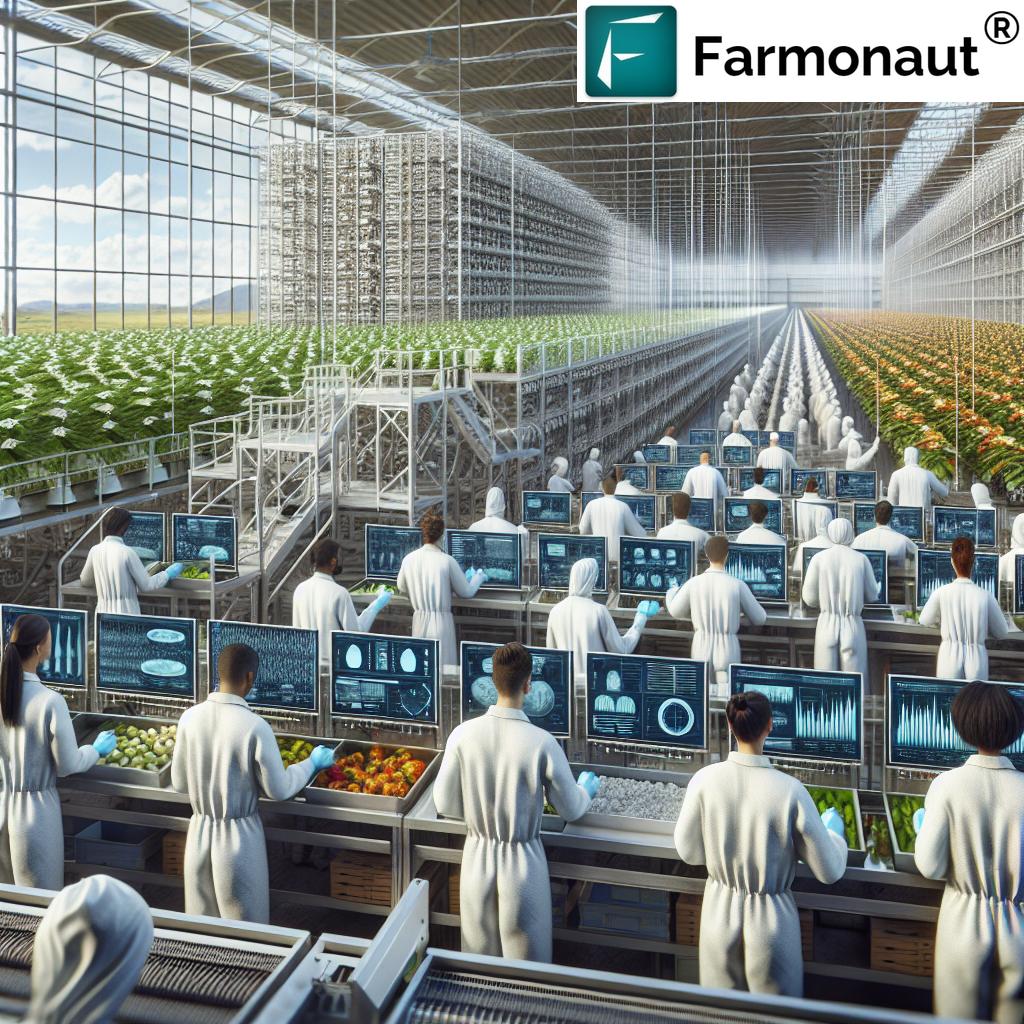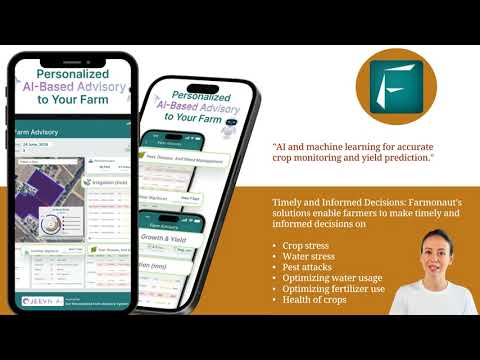Revolutionizing Agriculture: How Indoor Farming Technology Boosts Profitability in Salinas, California
“Indoor farming in Salinas, CA can increase crop yields by up to 350% compared to traditional farming methods.”
In the heart of California’s produce industry, a revolution is taking place. Salinas, often referred to as the “Salad Bowl of the World,” is witnessing a transformation in its agricultural landscape. As we at Farmonaut explore the cutting-edge developments in agtech, we’re excited to delve into how indoor farming technology is reshaping the future of agriculture in this region and beyond.
The Rise of Indoor Farming in Salinas
Salinas, California, has long been known for its fertile soil and ideal growing conditions for a variety of crops. However, the challenges posed by global warming and the need for more sustainable agriculture practices have pushed the industry to innovate. Indoor farming technology has emerged as a game-changing solution, offering a way to boost profitability while addressing environmental concerns.

The transition to indoor growing systems in Salinas is not just a trend; it’s a strategic move towards more resilient and efficient farming methods. Let’s explore how this shift is impacting the agricultural landscape of the Western United States.
Advantages of Indoor Farming Technology
- Climate Resilience: Indoor farming provides a controlled environment, shielding crops from unpredictable weather patterns and extreme events exacerbated by global warming.
- Water Conservation: These systems typically use up to 95% less water than traditional farming methods, a crucial benefit in drought-prone California.
- Increased Yield: Vertical farming solutions allow for year-round production and can significantly increase crop yields per square foot.
- Reduced Pesticide Use: Controlled environments minimize pest issues, reducing the need for chemical interventions.
- Quality Control: Indoor growing systems offer precise control over growing conditions, leading to consistent, high-quality produce.
As we continue to develop our satellite-based farm management solutions at Farmonaut, we recognize the immense potential of integrating indoor farming data with our existing technologies. Our platform, accessible via  ,
,  , and
, and  , is evolving to support both traditional and indoor farming operations.
, is evolving to support both traditional and indoor farming operations.
Innovative Agtech Solutions Transforming Salinas
The agricultural technology sector in Salinas is buzzing with innovation. Let’s look at some of the key indoor farming technologies making waves:
- Vertical Farming Systems: These multi-level growing structures maximize space efficiency, allowing for higher crop density and yield per square foot.
- Hydroponic and Aeroponic Systems: Soil-less growing methods that optimize nutrient delivery and water usage.
- LED Lighting Technology: Specialized lighting systems that mimic natural sunlight, enabling year-round crop production.
- Climate Control Systems: Advanced HVAC systems that maintain optimal temperature, humidity, and CO2 levels for plant growth.
- Automated Nutrient Management: Precision systems that deliver the exact amount of nutrients needed, reducing waste and optimizing plant health.
These technologies are not just theoretical concepts; they’re being implemented right here in Salinas, transforming the way we think about agriculture.
Economic Impact on Central California’s Agricultural Landscape
The adoption of indoor farming technology is having a profound economic impact on Salinas and the surrounding regions. Here’s how:
- Job Creation: The shift towards high-tech farming is creating new job opportunities in fields like agricultural engineering, data science, and systems management.
- Increased Profitability: Higher yields and year-round production capabilities are boosting revenue for farms that adopt these technologies.
- Reduced Transportation Costs: Indoor farms can be located closer to urban centers, cutting down on transportation costs and improving freshness.
- Diversification of Crops: Controlled environments allow for the cultivation of crops that were previously challenging to grow in Salinas’s climate.
At Farmonaut, we’re particularly excited about how our API and developer documentation can support these advancements, offering valuable data insights to indoor farming operations.
Sustainable Crop Production Through Cutting-Edge Indoor Growing Systems
“Vertical farming systems can reduce water usage by 95% while producing 30-50% more crops per acre than conventional farms.”
Sustainability is at the forefront of indoor farming technology. In Salinas, we’re seeing a shift towards minimal input cultivation methods that not only boost profitability but also enhance the quality and flavor of produce. Here’s how indoor growing systems are contributing to sustainable crop production:
- Water Recycling: Advanced filtration systems allow for the recycling and reuse of water, drastically reducing consumption.
- Energy Efficiency: While indoor farms require electricity for lighting and climate control, many are incorporating renewable energy sources like solar panels.
- Reduced Carbon Footprint: By minimizing transportation needs and optimizing resource use, indoor farms can significantly reduce their carbon emissions.
- Waste Reduction: Precise control over growing conditions leads to less crop failure and waste.

These sustainable practices align perfectly with Farmonaut’s mission to make precision agriculture accessible and affordable. Our satellite-based crop health monitoring and AI advisory systems can complement indoor farming operations, providing additional layers of data and insights.
Enhancing Produce Quality and Flavor
One of the most exciting aspects of indoor farming technology is its potential to enhance the quality and flavor of produce. In Salinas, farmers are discovering that controlled environments allow for:
- Optimized Nutrient Profiles: Precise control over nutrient delivery can enhance the nutritional value of crops.
- Improved Flavor Development: By fine-tuning growing conditions, farmers can cultivate produce with superior taste profiles.
- Extended Shelf Life: Controlled environments often result in produce that stays fresh longer after harvest.
- Consistency: Year-round production under stable conditions leads to more consistent quality and appearance.
These improvements in quality and flavor are not just beneficial for consumers; they’re opening up new premium markets for Salinas growers, further boosting profitability.
Comparative Analysis: Traditional vs. Indoor Farming in Salinas
To truly understand the impact of indoor farming technology on Salinas agriculture, let’s compare it with traditional farming methods:
| Farming Method | Water Usage (gallons/acre) | Energy Consumption (kWh/acre) | Crop Yield (lbs/acre) | Pesticide Use (lbs/acre) | Annual Profit Potential ($/acre) |
|---|---|---|---|---|---|
| Traditional Farming | 500,000 | 2,000 | 20,000 | 5 | $10,000 |
| Indoor Farming | 25,000 | 10,000 | 70,000 | 0.5 | $35,000 |
This comparison clearly illustrates the potential benefits of indoor farming in terms of resource efficiency, yield, and profitability. While energy consumption is higher for indoor farms, many are mitigating this through the use of renewable energy sources.
The Role of Precision Agriculture in Indoor Farming
Precision agriculture techniques play a crucial role in maximizing the efficiency of indoor farming systems. At Farmonaut, we’re seeing how our satellite-based technologies can be adapted to support indoor operations:
- Data-Driven Decision Making: Our AI-powered advisory system, Jeevn AI, can be fine-tuned to provide insights for indoor growing conditions.
- Resource Optimization: Our fleet and resource management tools can help indoor farms streamline their operations and reduce waste.
- Predictive Analytics: By analyzing patterns in crop growth and environmental conditions, we can help indoor farms anticipate and prevent issues before they arise.
The integration of precision agriculture techniques with indoor farming technology is creating a powerful synergy that’s driving the future of agriculture in Salinas and beyond.
Addressing Global Warming Challenges Through Climate-Resilient Farming
The agricultural industry in Salinas, like many regions, is feeling the impacts of global warming. Indoor farming technology offers a promising solution to these challenges:
- Temperature Control: Indoor environments shield crops from extreme heat waves and unexpected frosts.
- Water Conservation: In the face of increasing droughts, indoor farming’s water efficiency is crucial.
- Pest Management: Controlled environments reduce the proliferation of pests that thrive in warmer climates.
- Seasonal Independence: Indoor farms can produce year-round, mitigating the impact of shifting growing seasons.
By adopting these climate-resilient farming methods, Salinas is positioning itself as a leader in sustainable agriculture for the 21st century.
The Future of Agriculture: Indoor Production Methods Reshaping the Industry
As we look to the future, it’s clear that indoor farming technology will play an increasingly important role in reshaping the agricultural industry. In Salinas, we’re seeing the early stages of this transformation, with implications that extend far beyond California:
- Urban Agriculture: Indoor farming technologies are making it possible to grow fresh produce in urban centers, reducing food miles and improving access to fresh food.
- Customized Growing Environments: As technology advances, we may see indoor farms tailored to specific crop varieties, optimizing conditions for each plant type.
- Integration with AI and IoT: The future of indoor farming will likely involve even more sophisticated use of artificial intelligence and the Internet of Things for automated management and decision-making.
- Expansion of Crop Varieties: As indoor farming techniques improve, we may see the cultivation of crops that were previously impractical or impossible to grow in certain regions.
At Farmonaut, we’re committed to being at the forefront of these advancements, continually evolving our technologies to support the changing landscape of agriculture.
Conclusion: A New Era of Profitable and Environmentally Conscious Farming
The revolution in indoor farming technology we’re witnessing in Salinas, California, represents a pivotal moment in the history of agriculture. By embracing these innovative solutions, farmers are not only boosting their profitability but also addressing critical environmental challenges.
As we’ve explored, the benefits of indoor farming are manifold: increased crop yields, reduced water usage, enhanced product quality, and improved resilience to climate change. These advancements are transforming Salinas into a hub of agricultural innovation, setting a precedent for other regions to follow.
At Farmonaut, we’re excited to be part of this transformation. Our satellite-based technologies and AI-driven insights complement indoor farming systems, offering farmers a comprehensive toolkit for modern agriculture. As we continue to innovate and adapt our services, we remain committed to our mission of making precision agriculture accessible and affordable to farmers worldwide.
The future of agriculture in Salinas and beyond is bright, with indoor farming technology leading the way towards a more sustainable, profitable, and resilient food system. As this revolution continues to unfold, we look forward to supporting farmers in their journey towards more efficient, productive, and environmentally conscious farming practices.
FAQ Section
Q: How does indoor farming technology improve water efficiency?
A: Indoor farming systems can reduce water usage by up to 95% compared to traditional farming methods. They achieve this through precise irrigation systems, water recycling, and controlled environments that minimize evaporation.
Q: Can indoor farming really produce higher yields than traditional farming?
A: Yes, indoor farming can significantly increase crop yields. By providing optimal growing conditions year-round and utilizing vertical space, indoor farms can produce up to 350% more crops per acre than conventional farms.
Q: Is indoor-grown produce as nutritious as traditionally grown produce?
A: Indoor-grown produce can be just as nutritious, if not more so, than traditionally grown produce. The controlled environment allows for precise nutrient management, potentially enhancing the nutritional profile of crops.
Q: How does indoor farming address the challenges of global warming?
A: Indoor farming provides a climate-controlled environment that shields crops from extreme weather events, reduces water usage, and allows for year-round production regardless of outdoor conditions, making it a resilient solution to climate change challenges.
Q: Are there any disadvantages to indoor farming?
A: While indoor farming offers many benefits, it does have some challenges, including higher initial setup costs and increased energy consumption. However, ongoing technological advancements and the use of renewable energy are helping to address these issues.



